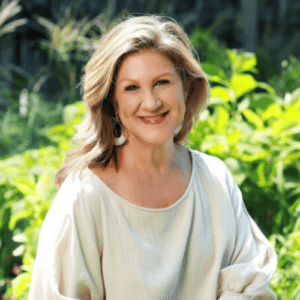Orthorexia nervosa, sometimes called simply orthorexia, is more than just carefully evaluating and selecting the types of food you consume. It’s an increasingly recognized pattern of obsessive thinking around the purity and quality of food. And it can quietly take over a person’s life.
Orthorexia is different from other eating disorders because it is driven by a generally positive desire: to eat more healthfully. Over time, however, those seemingly positive intentions can morph into behaviors and feelings that are compulsive, rigid, and ultimately, harmful.
What is Orthorexia?
Dr. Steven Bratman coined the term orthorexia nervosa in 1997 to describe a pattern of behavior marked by an excessive fixation on eating foods that one considers “healthy” or “pure.” In his view, orthorexia is not just a strong preference for nutritious food; what makes it pathological is when that preference becomes rigid, causes distress, and begins to impair one’s life and health (Bratman, 1997).
Orthorexia is a paradoxical condition because it begins with a sincere desire to improve health, and yet it ultimately becomes the obsessive pursuit of “perfect” eating. What starts as mindful nutrition hardens into tunnel vision for labeling foods as strictly “good” or “bad,” “pure” or “toxic.” This black-and-white thinking can lead to the elimination of entire food groups or ingredients from a person’s diet, often without medical necessity and at the expense of essential nutrients. Eventually, orthorexia undermines both mental and physical well-being.
Social connections shrink, too. Every day eating situations (dinner at a restaurant, home-cooked meals with friends or family) can feel threatening rather than enjoyable; not being able to verify and control how food is sourced and prepared is a dealbreaker for virtually every social situation. Eating outside a controlled environment triggers anxiety, worry, and fear, so it feels easier to withdraw completely than to risk “slipping up”.
The paradox in orthorexia is stark: in striving to become healthier, a person may end up less nourished, more isolated, and burdened with greater psychological distress.
Is orthorexia an eating disorder?
Orthorexia is widely regarded as an emerging eating disorder, though it is not yet an official diagnosis in the DSM-5 (the psychiatric manual used for classification).
That said, clinicians and researchers increasingly consider it part of the eating disorder spectrum because it shares many of the same hallmarks:
Having rigid food rules and an obsessive preoccupation with eating only foods perceived as “pure” or “healthy.”
Experiencing emotional distress when those rules are broken (guilt, shame, or anxiety, for instance).
Medical issues such as nutrient deficiencies and unintentional malnutrition when major food groups are eliminated.
Social isolation, including withdrawal from meals with loved ones and avoidance of restaurants or situations where food can’t be controlled.
The main reason orthorexia isn’t recognized as an official diagnosis yet is that experts don’t fully agree on how to define and measure it. Some screening tools do a good job of identifying truly harmful patterns, while others risk confusing committed healthy eating with a true disorder. Until researchers can establish clear, consistent criteria that work across different groups of individuals, orthorexia is unlikely to be added to psychiatric diagnostic manuals.
Signs + Symptoms
While the desire to eat well is not harmful in itself, it becomes concerning when it causes anxiety, guilt, and life disruptions. Researchers and clinicians point to several common symptoms that help distinguish orthorexia from balanced healthy eating:
Obsessive focus on the quality and purity of food.
Strict avoidance of foods considered “unhealthy,” “processed,” or “impure.”
Intense anxiety, guilt, or shame when food rules are broken.
Excessive time spent researching, planning, or preparing “acceptable” meals.
Rigid rules or rituals around eating and food preparation.
Avoidance of social events, restaurants, or other situations where food can’t be controlled or monitored.
Nutritional deficiencies or unintentional weight loss due to restricted food variety.
A sense of self-worth or moral identity tied to eating “correctly.”
Recognizing these behaviors and feelings is not about labeling someone a fanatic or passing judgment on their eating habits. It’s about noticing when the pursuit of health has shifted into something rigid, isolating, or harmful. If food choices are causing distress, interfering with relationships, or narrowing a person’s life instead of enriching it, the pursuit of health has crossed into disordered eating.
Causes + Risk Factors
Orthorexia doesn’t have a single cause. Like most eating disorders, it develops through a mix of psychological, cultural, and biological influences that combine in unique ways across different people.
Some of the most common risk factors include:
Personality traits. People who are perfectionistic, anxious, or highly self-disciplined may be more vulnerable to rigid rules around food.
Desire for control. Food choices can become a way to manage uncertainty, stress, or emotional discomfort by creating strict boundaries that feel safe.
Cultural influences. In a society that glorifies “clean eating,” wellness trends, and “detox” lifestyles, it can feel virtuous to cut out more and more foods deemed “toxic” or “impure”—even when doing so is harmful to one’s health or causes strain or concern in relationships.
Social media + influencer culture. Constant online exposure to idealized images of health and wellness can amplify fears of food-related health issues and reinforce the idea that healthy eating is a moral issue.
Overlap with other conditions. Orthorexia often shares roots with obsessive-compulsive tendencies, anxiety, and other eating disorders like anorexia nervosa.
Biological vulnerabilities. While research is still emerging, studies suggest that genetics and neurobiology (particularly differences in reward pathways and anxiety regulation) may play a role, similar to other eating disorders.
Healing from Orthorexia: Finding Balance + Joy in Food
At its core, orthorexia isn’t really about food; it’s about control, identity, and coping. People who develop orthorexia often turn to rigid “healthy eating” rules as a way to make sense of an unpredictable, confusing, and threatening world. Food becomes a stand-in for safety: if they can just eat the “right” things, they might be able to protect their bodies from illness, shield themselves from failure, and soften the emotional pain life can bring.
But like other eating disorders, orthorexia will never provide the control, safety, and protection it promises; it compromises and chips away at the beautiful parts of life until all that’s left is measuring, ingredient checking, categorizing, and labeling.
Breaking free from its rituals and beliefs, and fears can be challenging—but it’s possible.
Professional guidance. Working with an eating disorder-informed therapist, dietitian, or treatment team helps untangle the obsessive thought patterns of orthorexia and restore balance. Therapy approaches like cognitive behavioral therapy (CBT) or acceptance and commitment therapy (ACT) are often used to challenge rigid beliefs and reduce anxiety around food.
Gradual exposure to flexibility. Recovery isn’t about swinging from extreme restriction to eating everything at once — it’s about slowly reintroducing foods without fear and learning that eating something “imperfect” won’t harm your health.
Addressing underlying anxiety. Orthorexia is often fueled by perfectionism or the need for control. Working through these traits can reduce the grip food rules have on daily life.
Reframing health. Healing means recognizing that true health is not found in perfection, but in balance — eating a wide variety of foods, enjoying social connections, and supporting mental as well as physical well-being.
Rebuilding joy + connection. Sharing meals with friends, trying new foods, and embracing flexibility help restore the social and emotional aspects of eating that orthorexia often erodes.
At its heart, recovery is about reclaiming freedom and balance. It’s learning that well-being isn’t measured by the purity or strictness of a diet but by the ability to eat with ease, connect with others, and live fully without food rules and rituals taking center stage.
References
- Bratman, S. (1997). Health food junkies: Overcoming the obsession with healthful eating. New York: Broadway Books.














































